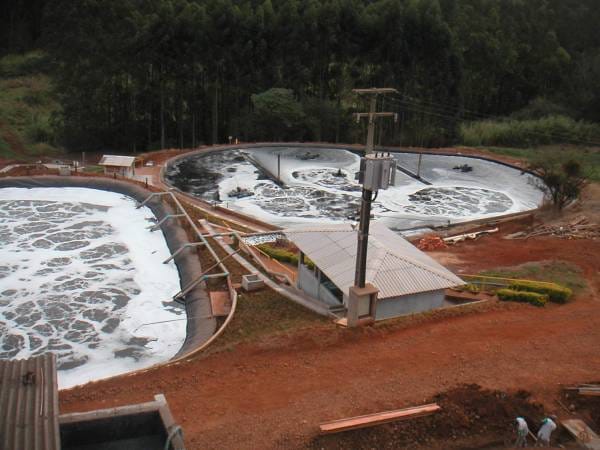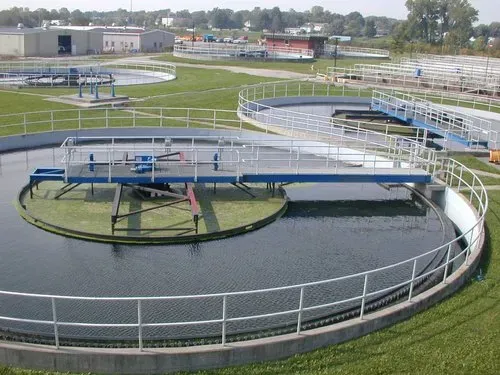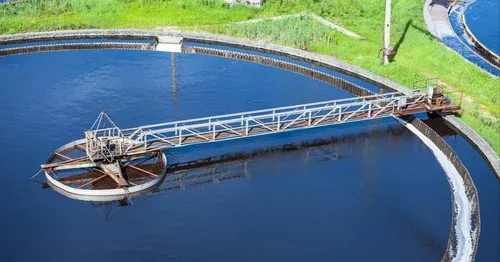Advancing Sustainable Solutions in Leather Industry Wastewater Treatment
Introduction to the Leather Industry
The leather business is a big industrial sector, but it is also noted for its large environmental footprint. One of the most urgent environmental challenges related with leather production is the development of large amounts of wastewater containing a complicated mix of toxins. This effluent contains organic and inorganic contaminants, soluble proteins, blood, hair, leather fragments, tissue pieces, oil and grease, suspended particles, solvents, color pigments, polishing polymers, chrome compounds, and ammonium. Given the complexities of these pollutants, constructing a reliable and effective wastewater treatment system is critical. This not only protects the environment, but also enforces adherence to high regulatory standards and supports sustainable business practices in the industry.

Challenges in the Leather Industry Wastewater Treatment
Variability of Wastewater Composition
The great variety of effluent content complicates wastewater treatment in the leather sector. This variation stems from the wide range of procedures and materials used in leather production. Different forms of leather, such as chrome-tanned, vegetable-tanned, and synthetic leather, produce effluent with distinct chemical and pollutant profiles. As a result, the design and operation of wastewater treatment systems must account for this variety, necessitating flexible and adaptable treatment procedures in order to successfully handle the unique contaminants found in wastewater.
Toxic Substances
Toxic compounds such as chromium, sulfides, and different organic chemicals provide one of the most serious obstacles in the treatment of leather industry effluent. Chromium is often used in the tanning process to stabilize leather and impart specific features, but it is also a hazardous material that, if not handled properly, can harm the environment. Sulfides, byproducts of the dehairing and deliming processes, lead to bad odors and pollutants. Furthermore, organic chemicals used in dyes, coatings, and other treatments can be hazardous to aquatic environments and human health. These toxic substances require particular treatment procedures, such as chemical precipitation, oxidation, or biological degradation, to ensure their effective removal or transformation into less damaging forms.
Odour, Coloration, and High BOD/COD Levels
The presence of bad odors, coloring, and high levels of biological oxygen demand (BOD) and chemical oxygen demand (COD) hampers wastewater treatment in the leather sector. Foul scents are frequently created by the decomposition of organic matter and sulfides, which can be unpleasant and indicate the presence of hazardous substances. Coloration is mostly caused by the presence of dyes and pigments used in leather manufacturing, which can be difficult to remove using standard procedures. High BOD and COD values indicate the presence of biodegradable organic compounds and chemicals that use oxygen during decomposition, limiting the efficacy of aerobic biological treatment processes and perhaps contributing to oxygen depletion in receiving water bodies.
Advanced technologies and qualified personnel
The successful administration and operation of wastewater treatment plants in the leather industry necessitates innovative technologies and competent personnel. Given the complexity of the pollutants found in leather industry wastewater, traditional treatment technologies may not always be adequate to meet regulatory standards and environmental discharge restrictions. Thus, advanced treatment technologies, including as membrane filtration, enhanced oxidation processes, and biological nutrient removal, may be required to achieve the desired treatment results. Furthermore, professional personnel with backgrounds in wastewater treatment, chemistry, microbiology, and environmental engineering are required to monitor and optimize treatment operations, troubleshoot problems, and assure regulatory compliance.

Treatment Methods for Leather Industry Wastewater
1. Physical Treatment Methods:
- Screening: This initial treatment step involves the removal of large debris, hair, and leather fragments to prevent clogging of pipes and protect downstream treatment processes.
- Primary Sedimentation: In this process, suspended solids and organic matter are allowed to settle, reducing the organic load and facilitating subsequent treatment processes.
- Equalisation: This step involves balancing the flow and composition of wastewater to ensure consistent treatment performance and protect biological treatment systems.
- Grit Removal: This process eliminates inorganic particles like sand, grit, and gravel from the wastewater to prevent abrasion and damage to equipment.
- Coagulation and Flocculation: Utilises chemicals to destabilize and aggregate fine particles and colloids, enhancing their removal during sedimentation and filtration processes.
2. Chemical Treatment Methods:
- Chemical Precipitation: Utilises chemicals such as lime or ferric chloride to induce the formation of insoluble precipitates, thereby removing toxic materials, heavy metals, chrome, and sulfides from the wastewater.
- Sulphur Oxidation: This process involves the conversion of sulfide compounds into less harmful forms through oxidation, reducing odor and toxicity levels in the wastewater.
- Advanced Oxidation Processes (AOPs): Utilises powerful oxidants like ozone or hydrogen peroxide to break down complex organic compounds, colorants, and refractory pollutants, enhancing overall treatment efficiency.
- Membrane Filtration: Employs membranes with varying pore sizes to physically separate and remove suspended solids, bacteria, and other contaminants from the wastewater, producing high-quality effluent.
3. Biological Treatment Methods:
- Extended Aeration Activated Sludge Process: Utilises aerobic microorganisms to break down organic pollutants, reducing BOD and COD levels and improving the overall quality of the treated wastewater.
- Upflow Anaerobic Sludge Blanket (UASB) Process: This anaerobic treatment method is particularly effective for treating high-strength organic wastewater, converting organic matter into biogas and reducing the organic load.
- Sequencing Batch Activated Carbon Process: Combines activated sludge treatment with carbon adsorption to enhance the removal of organic pollutants, color pigments, and other contaminants from the wastewater.
- Oxidation Ditch: A variation of the activated sludge process that utilizes mechanical agitation and aeration to promote microbial growth and degrade organic matter effectively.
- Combination of Aerobic and Anaerobic Treatment: Integrated treatment approach combining both aerobic and anaerobic processes to optimize treatment efficiency, reduce energy consumption, and achieve the desired effluent quality.
- Constructed Wetlands: Utilizes natural processes and vegetation to treat wastewater, enhancing nutrient removal, reducing BOD and COD levels, and providing habitat for wildlife.

Conclusion
Wastewater treatment in the leather industry is a complex and tough task due to the diversity and complexity of toxins found in the wastewater. However, with the right combination of physical, chemical, and biological treatment methods tailored to the leather industry's specific needs and difficulties, successful wastewater treatment is possible while avoiding environmental damage and assuring regulatory compliance.
Investing in contemporary wastewater treatment technology, continuous monitoring, and competent personnel training are important to the successful operation and long-term viability of wastewater treatment plants in the leather industry. By taking a proactive approach, embracing innovative solutions, and fostering a culture of environmental responsibility and sustainable development, the leather industry can reduce its environmental footprint, safeguard natural resources,